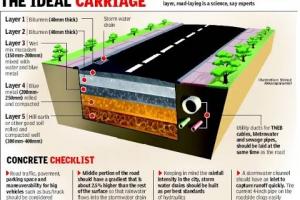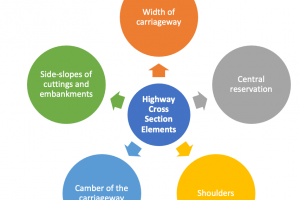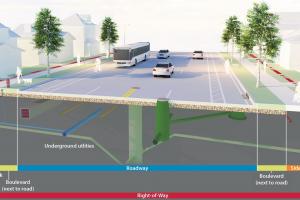Traffic Load - Definition and Analysis
Traffic loading
This is the role of the Pavement Engineer and involves determining the loading on the road to be carried forward to the Pavement Design. The role of the pavement engineer is to provide an adequate thickness of pavement to carry the expected loads without deterioration of the network during the design life.
The estimated or projected magnitude and occurrence of the various traffic loading are converted to the total number of passes of equivalent standard axle loading (ESAL), usually the equivalent 80KN (18kips) single axle load. The total no. of ESAL is used as the traffic loading input for design of pavement structure.
Determination of cumulative equivalent standard Axle (Road Note 31).
The steps are as follows;
- Determine the daily traffic flow for each class of vehicle weighed, using the results of the traffic survey and any other recent traffic count information that is available.
- Determine the Avg-daily one directional additional traffic flow for each class of vehicle.
- Make a forecast of the one directional flow for each class of vehicle to determine the total traffic in each class that will travel over each lane during design life.
- Determine the mean equivalence factor for each class of vehicle and for each direction form the result of this axle load survey and any other surveys that have recently been carried out.
- the product of the cumulative one directional traffic flows (example, with reference to asphalt institute) for each class of vehicle over the design life of the road and the mean equivalent factor for that class should then be calculated and added together to give the cumulative equivalent standard axle loading for each direction. The higher of the two directional values should be used for design.
|
Wheel load |
Axle load |
Equivalence factor |
|
1.5. |
3.01 |
0.01 |

Asphalt institute:
Total volume of traffic expected during the design period
.![]()
Where
T1 = Traffic volume during first year.
R = Rater of growth expressed as a fraction
N = Design period (years)
Estimate the percentage of total trick traffic expected to use the design lane, the design lane is the lane expected to receive the most sever service.
|
No. of traffic lanes |
% of trucks in design lane |
|
2 |
50 |

Truck Factor:
Multiplying number of axles in each weight class, by an appropriate load eq factors. Summing for the various weight classes dividing the sum by total no of vehicles involved.












